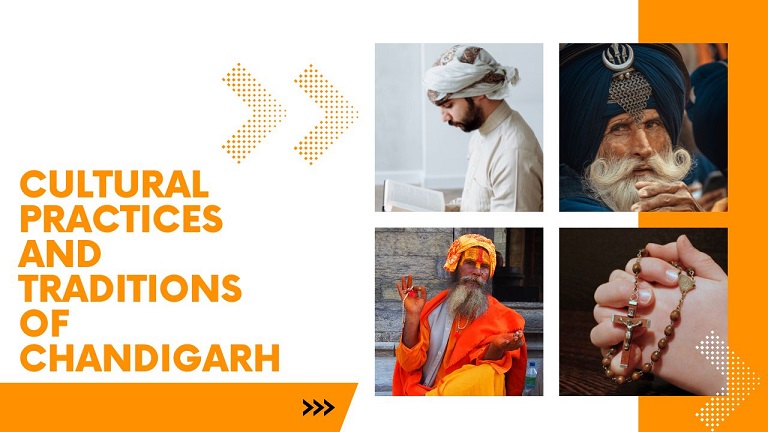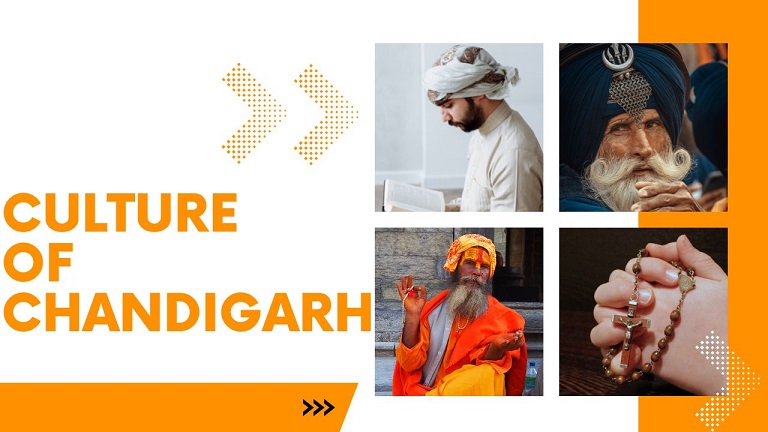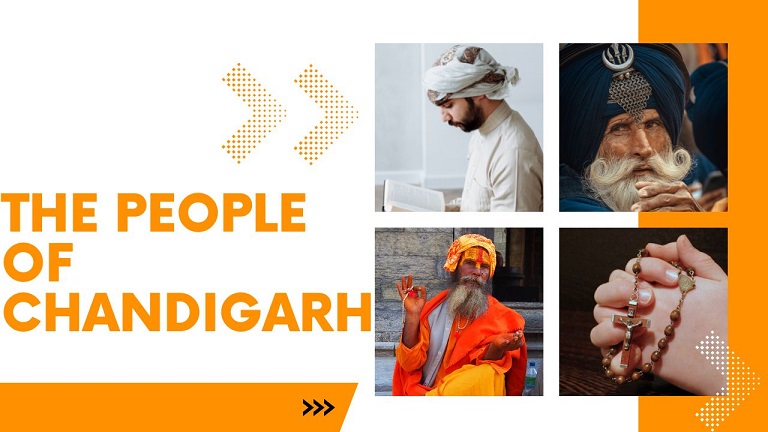The People of Chandigarh
Chandigarh is the capital of Punjab and Haryana. It was built in the 1950s and is known for its uniqueness. Today, many people from different cultures and parts of India also come here to raise themselves and their families, let’s know about People of Chandigarh in detail.
Origins of Chandigarh
Chandigarh was built to replace Lahore after the partition of 1947. In the initial years, it gave many planners, administrators, and architects opportunities to map out and construct this beautiful city.
Many people from Kerala, Maharashtra, Uttar Pradesh, and Tamil Nadu migrated to Chandigarh to find government jobs. Many people from Punjab, Haryana, Uttar Pradesh, and Bihar searched for work and better livelihood opportunities.
People from all over India have made Chandigarh their home for many decades. In 1952, the whole population of Chandigarh was just 12,00,000, but now it touches more than a million people.
Education and literacy profile
Chandigarh is known as a union territory and a planned city that offers various job opportunities in government and private institutions.
According to the 2011 census, Chandigarh has a literacy rate of 86.43%, much higher than the national average. The literacy rate slightly varies in men and women.
Also, about five dozen colleges and study institutes make it a study hub for students from Punjab, Haryana, and other states.
There are various subject and course options for architecture, management, law, engineering students, etc.
Other factors that make Chandigarh a modern urban space are that this city has many English-speaking people, digitally connected youth, and a working population in various sectors like corporate jobs, academics, and entrepreneurship. All of this together contributes to making Chandigarh a multicultural dynamism.

Food Culture
Chandigarh has multicultural food options because of its diverse population. You can find amazing street food vendors, intrusive hotel dining, restaurants, and cafes here.
But Chandigarh is still famous for its mouth-watering Punjabi cuisine. Many outsiders come to Chandigarh to have their sarson ka saag, and makki di roti served in the sector 22 market.
A variety of sweets are also served here. Apart from this, you can find many street stalls and restaurants that serve various north Indian snacks like chaat, golgappe, etc.
As people from many communities live here, it offers food options for all in Bengali, Maharashtrian, south Indian, continental, Mughlai, etc. Thus, the food of Chandigarh brings all the people together regardless of their culture.
Clothing culture
Regarding Chandigarh’s clothing culture, locals wear salwar-kameez, sarees, and kurta pajamas with jackets.
Women wear suits with dupattas, and men, especially Sikhs, wear turbans. However, migrants prefer Western attire, such as t-shirts, trousers, shirts, and jeans, rather than traditional clothing.
Still, on some special occasions or festivals, they can be seen in ethnic wear. Thus, Chandigarh’s clothing culture combines modern and traditional wear.
Occupational profile
Chandigarh is considered a home for many jobs, including government jobs in administrative and technical offices.
Also, there are many government job opportunities for lawyers, nurses, teachers, doctors, and workers in the hospitality, tourism, and transport sectors.
Apart from this, there are also many opportunities for people in the private sector, including IT firms, private institutions, etc.
Many people who work on construction sites, real estate sites, and at people’s homes as cooks, drivers, and workers live in slums or tiny houses.
Thus, when we look at the working population of Chandigarh, it is from daily wage earners and traders to executives, bureaucrats, and top officials.
Experience of migrants
Most of the people who live in Chandigarh have roots in other states. because a large number of migrants came here to seek better opportunities for income and livelihood.
Many landless people came to get engaged in the city’s construction in the early tricity’s times; many migrants faced difficulties like discrimination in jobs, housing, and public spaces. They also faced many hardships in the context of caste, religion, cultural and linguistic barriers.
Family values and structure
The family structures in Chandigarh are quite diverse because of inter-caste and inter-state marriages. Most of the families here need to be clarified, but joint families can also be found.
If we talk about family values, then residents of Chandigarh give more emphasis on education, respecting everyone, and inculcating discipline. Gender equality is also very prominent here.
Architecture of Chandigarh
According to Le Corbusier, Chandigarh is a city of gardens with perfectly organized urban spaces. The architecture of Sukhna Lake, Rock Garden, and all the sectors with adequate greenery and housing make it a highly valued notable heritage.
Also, the minimalism and concrete facades of its capitol complex, which comprises the high court, legislative assembly, and secretariat, maximize its beauty.
Lifestyle of Chandigarh (India’s First Smart City)
After partition, Chandigarh was built as India’s first Smart City, which comprises excellent healthcare, education, connectivity, cultural recreation, etc. Also, it is rated as India’s happiest city with a vibrant cosmopolitan lifestyle.

Confluence of cultures
Chandigarh is known as the administrative capital of two states—Punjab and Haryana. Since its initial construction, Chandigarh has attracted educated professionals and bureaucrats, which is the most important reason why its culture has a cosmopolitan character.
Apart from having a dominant Punjabi culture, you can see the influence of various cultures here in the context of cuisine, languages, festivals, and religious diversity.
Seats given to political parties
Being a union territory and epicenter of Punjab and Haryana’s political authority, Chandigarh is strategically an important city.
As a resident of two states, Chandigarh sometimes faces issues related to political controversies and debates between parties, but overall, the city remains peaceful.
Chandigarh’s carefully planned heritage, high living standards, inclusive culture and political significance make it different. To which The City Beautiful remains an exemplar.
FAQ’s
Who designed the Chandigarh city?
Charles-Edouard Jeanneret (Le Corbusier), a Swiss-French architect, mainly designed it. His cousin Pierre Jeanneret and English architects Jane Drew and Maxwell Fry were with him when he created The City Beautiful.
Why is Chandigarh known as the City Beautiful?
Because of its clean environment, organized structure, modern architecture, extensive gardens, and wide roads, Chandigarh is known as the City Beautiful.
Which states are the neighbors of Chandigarh?
Chandigarh shares its north and east borders with Punjab and its east and south borders with Haryana.
What is the literacy rate of Chandigarh?
According to the 2011 Census data, Chandigarh has the highest literacy rate, 86.43%, in which the literacy level of both men and women is equal. This rate is significantly higher than the national average.
What is Chandigarh famous for?
Chandigarh is famous for its public spaces, greenery, educational institutions, clean environment, perfectly planned architecture, favorable living conditions, high standards of living, educational institutions, and information technology industries, among other things, compared to other cities or states.
What is the significance of Chandigarh?
Chandigarh is the capital of Punjab and Haryana. It is also one of India’s Union Territories, which are under the direct administration of the Central Government.
What are the key destinations that define the architecture of Chandigarh?
The high court, legislative assembly, secretariat, Sukhna Lake, Rose Garden, Rock Garden, City Center, and Open-Hand Monument are some destinations that beautifully define Chandigarh’s architecture.
What is the significance of the Open Hand Monument in Chandigarh?
The official emblem or symbol of Chandigarh symbolizes peace and reconciliation because an open hand invites friendship. It is located in the Capitol Complex, which was designed by Le Corbusier.
How can I reach Chandigarh if I live in Delhi?
The estimated distance between Chandigarh and Delhi is 244 km, and it takes approximately 3.5 to 4 hours to reach Chandigarh by road. Alternatively, if you choose an airplane or an express train, it will take about 1 to 2 hours.
We hope you like our article on “The People of Chandigarh”.
Thanks for visiting – Chandigarh News in Hindi | Chandigarh News in English | Chandigarh News Live|Chandigarh Latest News |Chandigarh News Today | Chandigarh News | Chandigarh Latest News | चंडीगढ़ न्यूज़ | Chandigarh News Hindi



